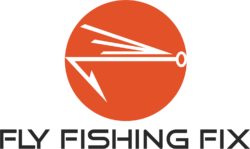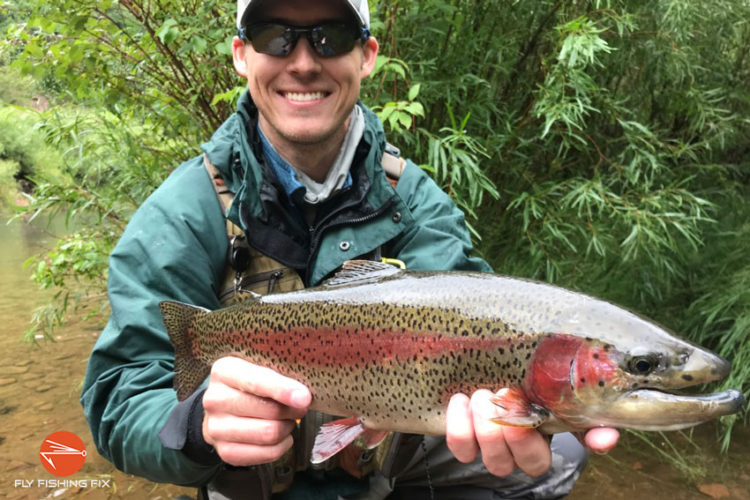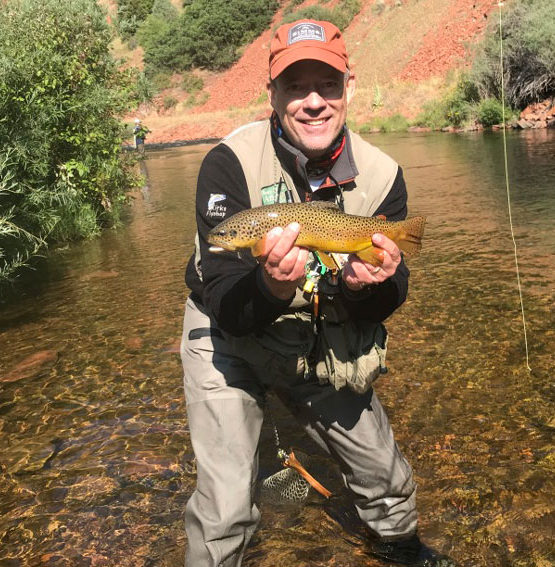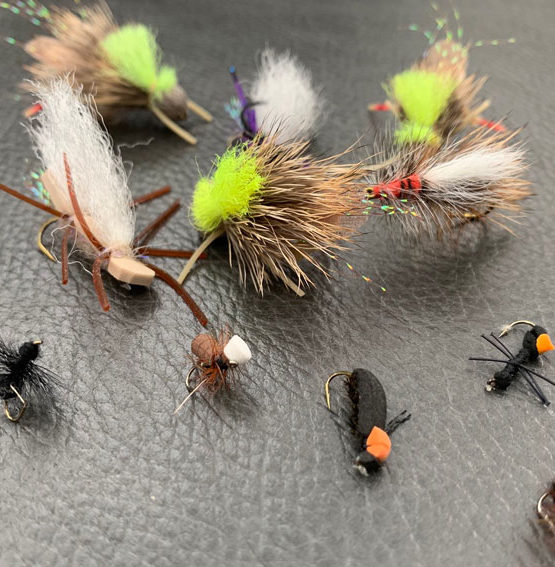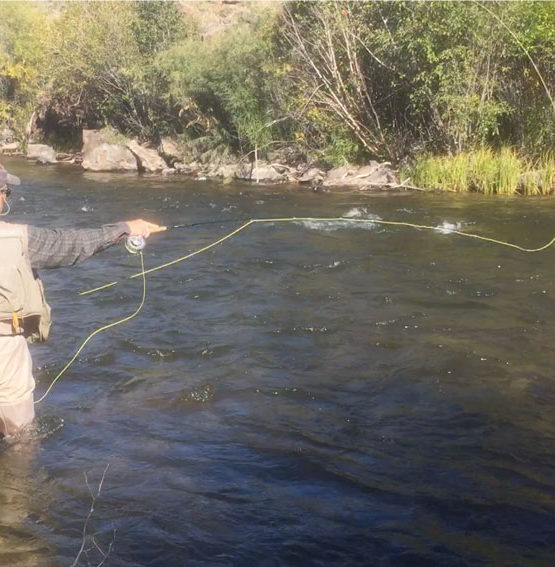Looking for tips on how to catch more trout?
Well, you just stumbled upon the most awesome guide to catching more trout in the history of all mankind. (Man, I give myself the best compliments!)
Seriously though, I think it’s fair to say that in western fly fishing, in the back of every angler’s mind, there is one overarching question: how do I catch more trout?
We angler’s are known to spend hours pondering this question and scouring the internet for answers. At times, we spend hundreds, or even thousands of dollars buying fly fishing gear with the notion that it will increase our odds of catching more fish. And seriously, there is no end to the number of miles we are willing to drive in order to feel the wriggle of a big, beautiful Rainbow at the end of our line.
So, in the spirit of that great pursuit, I decided to put together this little gem of an article. And wouldn’t you know it, the best title I could come up with was, 25 Proven Tips To Catch More Trout.
Sometimes it’s best to just get to the point.
Disclaimer: This post may contain affiliate links, meaning we will receive a small commission (at no cost to you) if you click through and make a purchase.1. Get A Guide
If you want to learn how to catch more trout, then getting a guide should be at the top of your priority list.
I can’t begin to describe to you the wealth of knowledge I have learned from fly fishing guides over the years.
To this day, I use tips I learned from guides when I was a kid almost 20 years ago. And even after all my fly fishing experience, every time I get a guide, I walk away with at least a couple great tips and techniques to up my game.
Now, I realize that paying for a guide might seem expensive, and therefore, hard to justify at first. But, when you really think about it, getting a guide is a pretty awesome deal. For a few hundred dollars, you get access to the mind, and instruction of a professional angler that could improve your fly fishing ability for the rest of your life. That’s a pretty good ROI.
That’s why I firmly believe that if you want to learn how to catch more trout, getting a guide is the best possible thing you can do.
Related Content:
- How Much Should You Tip A Fishing Guide?
- 10 Reasons You Should Take Up Fly Fishing
- 25 Tips For Fly Fishing Small Streams And Creeks
- 10 Baetis Nymph Patterns You Need To Try
- 25 Best Dry Flies For Colorado Fly Fishing
- San Juan Worm: What It Is, And How To Tie It
2. Fish With More Than One Fly
It stands to reason that if you want to catch more trout, you should present them with more than one opportunity to eat what you’re serving. The best way to do that is to fish with a two-fly rig. Or, if you are willing to risk the higher potential of tangles and wind knots, throw on three flies.
Give the fish some options, baby!
If you’ve never fished a rig with multiple flies, there are a few ways to do this. You can fish with all dry flies, a dry-dropper (which is a dry fly and a nymph), or multiple nymphs. All of these are great ways to increase your odds of catching more trout. Trust me when I say, the results will speak for themselves.
3. Keep Your Rig Clean
Fly fishing is an active process, which means, you should consistently assess what you’re doing, how you’re doing it, and what you might be doing wrong. And casting a dirty rig falls into the ‘what you’re doing wrong’ column.
Honestly, if you think a trout is going to hit a muddy little algae ball floating down the river, you are in for a long day of unsuccessful casting.
That’s why you should aim to check and clean your rig about every dozen casts — or more, depending on the amount of crud in the water. (Just in case you were wondering, “crud” is a technical fly fishing term.)
4. Use A Longer Leader
One of the quickest ways to reduce the quantity of trout you catch, is to use a leader that’s just too short. This is particularly true when you are nymphing on a deep, swift-moving river. You see, if your leader isn’t long enough to allow your flies to get to the bottom (where trout like to hang out), then you have to hope the fish are looking up.
Additionally, if you are casting to skittish fish in still or slow-moving water, the disturbance of your fly line landing on the water can send fish swimming for the hills. So, the further the end of your fly line is from the fish when it lands on the water (i.e. the longer your leader is), the better off you’ll be.
5. Be Stealthy
In most cases, fish don’t like it when humans thrash through their peaceful little home. I get it. I don’t even like it when people let their dogs walk through my front yard.
Would you please yank that leash before your dog determines that the only thing missing from my curb appeal is a big steaming meatloaf in the front yard?!
I digress.
If you want to catch more trout, then be quiet, don’t wear bright clothes, and don’t let your shadow cast over the water. The less you disturb the fish in their natural habitat, the more likely they are to take your fly.
6. Don’t Over-Play The Fish
If you have ever been in sales, you know the phrase, “don’t sell past the close.” It basically means, once you have an opportunity to close the deal, shut your mouth and, to quote Alec Baldwin in Glengarry Glen Ross, “get them to sign on the line which is dotted!”
Well, in fly fishing, the longer you play a fish, the more likely they are to break free. So, when you see a window of opportunity to horse that fish in, go for it. Lift your rod as high as possible, lift that fish’s mouth out of the water, and get it in your net! Sometimes a little tough love is exactly what a trout needs.
Give ‘em the wood!
7. Use Smaller Flies
If you are new to fly fishing, it’s important that you understand something sooner rather than later: bigger flies do not equate to bigger fish. Sure, there are times when a size 8 Chernobyl Ant will attract some attention, but for the most part, if you want to catch more trout, you should opt for smaller flies.
Throughout my life, I bet about 90% of all the trout I have caught were on a size 16 fly or smaller.
If you don’t believe me, or you just need a little small fly education, be sure to check out our recent post: Fishing With Small Flies (The Complete Guide).
8. Slap The Water With Terrestrials
If you are fishing a terrestrial — for example, a hopper, cricket, ant, or beetle — then don’t be afraid to slap your fly on the water as part of your presentation. These bugs aren’t known for making graceful landings on water, so fish expect a little splash.
Honestly, this is part of what makes fishing with terrestrials so much fun.
Subscribe To Fly Fishing Fix, Today!
9. Pay Attention To Depth
If you are nymphing, one of the most important things to pay attention to is your depth. Similar to dry fly fishing, when you want to land your fly just slightly upstream of a feeding fish, with nymphing, you need to get that fly deep enough to catch the fish’s attention.
You can control your depth by adding and removing weight, or by adjusting the placement of your strike indicator.
Depth control is a critical skill if you want to catch more trout when you’re nymphing.
10. Fish Without An Indicator
If you are fishing stillwater, gin-clear water, or shallow water, and you are nymphing, you might want to remove your strike indicator. This is a great way to decrease the disturbance your line makes when it lands on the water, and therefore, can help you catch more trout.
Oh, and if you are sight-casting, you should never fish with an indicator. I mean, if you can actually see a fish take your fly, then what’s the point of an indicator?
11. Use A Dry-Dropper Rig
I already mentioned fishing with multiple flies, but I feel it’s important to call out the dry-dropper rig on it’s own. The dry-dropper rig is a great setup if you are fishing pocket water, small streams, or when fish are hitting emergers.
It’s the best of both worlds (i.e. dry fly fishing and nymphing), which increases your chance of catching a fish.
If you do decide to fish a dry-dropper rig, I recommend using a large, easily visible, dry fly like a stimulator or a caddis as your top bug, with a bead head nymph as your dropper. That way, your trailing bug has enough weight to sink quickly, while your top fly has enough buoyancy to stay afloat.
12. Dead Drift Your Flies
The “dead drift” is one of the most important river fly fishing techniques you can learn if you want to catch more trout. And, if you’ve spent much time around other anglers, you’ve probably heard this term thrown around a time or two. But what is dead drifting?
Well, a dead drifting is basically the process of casting and mending so that your flies drift without ever being influenced by your line. The easiest way to achieve a dead drift is to stand in the middle of a river, cast directly upstream, and strip in your line at the same speed of the current.
Though, you can still achieve a dead drift when casting across the current. You just have to learn how to mend your line properly. Here’s a brief explanation.
When you cast upstream, keep your rod tip high in order to keep as much slack line off the water. Then, as your fly passes in front of you, gently mend your line upstream — doing your best to avoid disturbing your rig’s drift — so that your slack is up-river of your indicator and flies. Then, as your rig drifts downstream, drop your rod tip and start feeding it line.
This method allows you to make long, beautiful drifts that allow your flies to float and tumble through the water as if they weren’t attached to your line.
The better you get at dead drifting, the more fish you will catch.
13. Net Fish From The Front
There’s nothing worse than making a great cast, a great drift, a perfect hook-set, and then losing a fish because you failed to net it properly. It’s one of the emptiest feelings we anglers can experience. And if you are netting fish from the tail, you are going to experience more of these tragic moments.
It might seem counterintuitive, but netting should be done from the front of the fish. You see, fish can only swim in the direction their head is pointed. So, if their head is pointing toward the bottom of your net, you are much less likely to lose them.
14. Walk Your Fish Downstream
If anybody ever tells you to stand in one place whenever you catch a fish, then slap them in the face. Since when do they make the rules?
If you want to catch more trout, and in particular, large trout, you need to be willing to walk a hooked fish down stream. This will help tire the fish out, without allowing them to get so far downstream that you end up losing them.
Though, I will add one exception to this tip: if you are standing in a hole, surrounded by anglers that are hovering around you, waiting for you to walk downstream so that they can unceremoniously steal your spot, then stand your ground and let that fish take you as far downstream as it wants. DO NOT MOVE!
I don’t care if you have to stand there all day. Your new objective is to catch as many fish as possible, without moving a single inch. Teach that lingerer a much-needed lesson.
Dang it, I got myself all worked-up. Let’s move on.
15. Let The Fish Run
Along the same lines as walking downstream, don’t restrict trout from running when they need to. If you over-restrict a fish early on in your fight — when they have the most strength and energy — they will break you off.
So, don’t set your reel drag too tight, and let that fish get out some energy. That way, when it’s time to give ’em the wood, they will gladly welcome the hospitality of your net.
16. Set The Hook Downstream
This is one of the hardest techniques to learn as an angler, because when you see your strike indicator dip under, or a fish sip your dry fly, your first instinct is to pull your rod skyward. However, if you want to increase the effectiveness of your hook-set, you should, instead, pull your rod to the downstream side.
Since fish face upstream, this will pull your fly toward the side of their mouth, where your hook is much more likely to grab hold. In contrast, if you set the hook by yanking your rod up above your head, or to the upstream side, you are more likely to pull the fly upstream, and out of their mouth.
17. Fish At Night
If you ever get to do some night fishing, then you may just experience some of the best fly fishing of your life. I can tell you from personal experience that fish get crazy active at night.
For instance, on one particular occasion, I was night-fishing the Taylor River with my dad, and landed about 60 fish in 2 hours. It was the wildest fly fishing experience I have ever, well, experienced. Not only were they voraciously feeding, but whenever I hooked a fish, they would instinctively follow the light from my headlamp, which allowed me to direct them right into my net. It was like a fish catching assembly line.
To paraphrase Chazz Reinhold in Wedding Crashers, “At night, fish are CRAZY hungry. It’s not even fair.”
18. Talk To Local Fly Shops
In my opinion, one of the best ways to start a day of fly fishing, is by acquiring some knowledge from the local fly shop. I mean, why spend your whole day trying to figure out what the fish are eating when you can just find out from a local — that fishes there every single day — what the fish have been feasting on?
Oftentimes, the person you talk to will actually be a guide, and as we discussed at the beginning of this article, they know their freakin’ stuff.
19. Use Attractor Flies
Have you ever seen a commercial for a restaurant where a burger looked so good, or a steak sizzled so perfectly, that you ended up going there for dinner? Well, fish are known to act the same way when they see bright and flashy flies.
So, if you want to catch more trout, then try throwing on a bright-colored attractor fly, a flashback emerger, or a nymph with a shiny beadhead.
Sometimes you just need to add a little sizzle to your rig.
20. Go On A Float Trip
If the extent of your fly fishing experience is standing on the side of big rivers, or wading through small streams, it’s time for you to experience the world of float trips.
I don’t care how good of an angler you are, you just can’t equal the presentation and drift-length you get while casting from a boat. And, if you want to catch more trout, this is a sure-fire way to do so.
If you are looking for a good float trip, I recommend fishing the Bighorn River in Montana. The main float is 13 miles of sheer fly fishing glory, that will not disappoint.
21. Learn From More Experienced Anglers
As with any skill, if you want to get better at fly fishing, you should make a point to learn from more accomplished anglers. Similar to fishing with a guide, there are all sorts of great tips and tricks you can pick up from somebody with more experience and skill.
You’d be surprised how much you can learn on the drive to one fishing destination, alone. I would know. I spent countless hours as a kid, absorbing valuable fly fishing knowledge from the backseat of my dad’s car as he and his fly fishing buddies discussed their go-to techniques and tricks to catch more fish.
Listening to the wisdom and advice of other anglers is one of the best ways to improve your fly fishing skills, and in turn, catch more trout.
22. Get Better At Rigging
Early on in my fly fishing journey, I decided to conquer the difficulty of rigging a multiple-fly rig. I was sick and tired of spending 20 minutes on the side of the river, trying to tie my second section of tippet to the shank of my first hook. So, I went and bought a giant spool of fishing line, and every night I would practice tying various fly fishing knots. And to this day, it was one of the best things I ever did.
You see, the longer it takes you to set up your rig, the less time you will actually spend fishing; which means fewer fish. Additionally, if re-rigging is a difficult, daunting task for you, then you are more likely to avoid it. And, without re-rigging, you miss the opportunity to experiment with different flies and setups that could lead to much more success.
23. Use Lighter Tippet
One of the common fly fishing mistakes beginners make is that they use tippet that’s too heavy for their situation.
So, if you are struggling to catch fish, and you can’t figure out why, you might just try using a lighter tippet. This is particularly important if you are fishing small streams, or you are fishing to skittish, “leader-shy” fish.
For more on this topic, be sure to read our recent post: Do You Need Tippet For Fly Fishing?
24. Learn How To Read A River
If you don’t know where fish hang out and pod-up in rivers, then you are probably missing valuable opportunities. And, while each river has its own nuances, fish have certain, predictable, tendencies that can help you identify the perfect places to cast.
Knowing how to read a river is one of the most important skills you can learn as an angler, and it will almost certainly help you catch more fish.
25. Fish Better Locations
One thing I have learned over the years, is that fisheries are not all created equal. Some of them have a lot of fish, while others just plain don’t. It doesn’t matter how good of an angler you are, if there aren’t any fish, you aren’t going to catch anything.
Think of it like Halloween. Have you ever noticed that kids don’t spend a lot of time trick-or-treating in retirement communities? That’s because all the porch lights are turned off, everyone is in bed by 8, and the only candy they have available is a bowl of dusty lemon drops they’ve had on their coffee table since 1976.
No, kids go trick-or-treating in young neighborhoods filled with other little kids in costumes, parents that enjoy spending a cold night walking door to door with a hot toddy in hand, and a high concentration of candy.
And as an angler, you should take a page out of that same book.
To put it simply, if you want to catch more trout, then fish in a location that has a lot of trout.
Bottom Line
If you took the time to read through this entire post, then you must really want to catch more trout. And man do I respect you for that!
But, if catching more trout is a high priority in your life, then you should subscribe to this blog. I mean, all we talk about is fly fishing. Are you really going to say no to that?
Subscribe To Fly Fishing Fix, Today!
